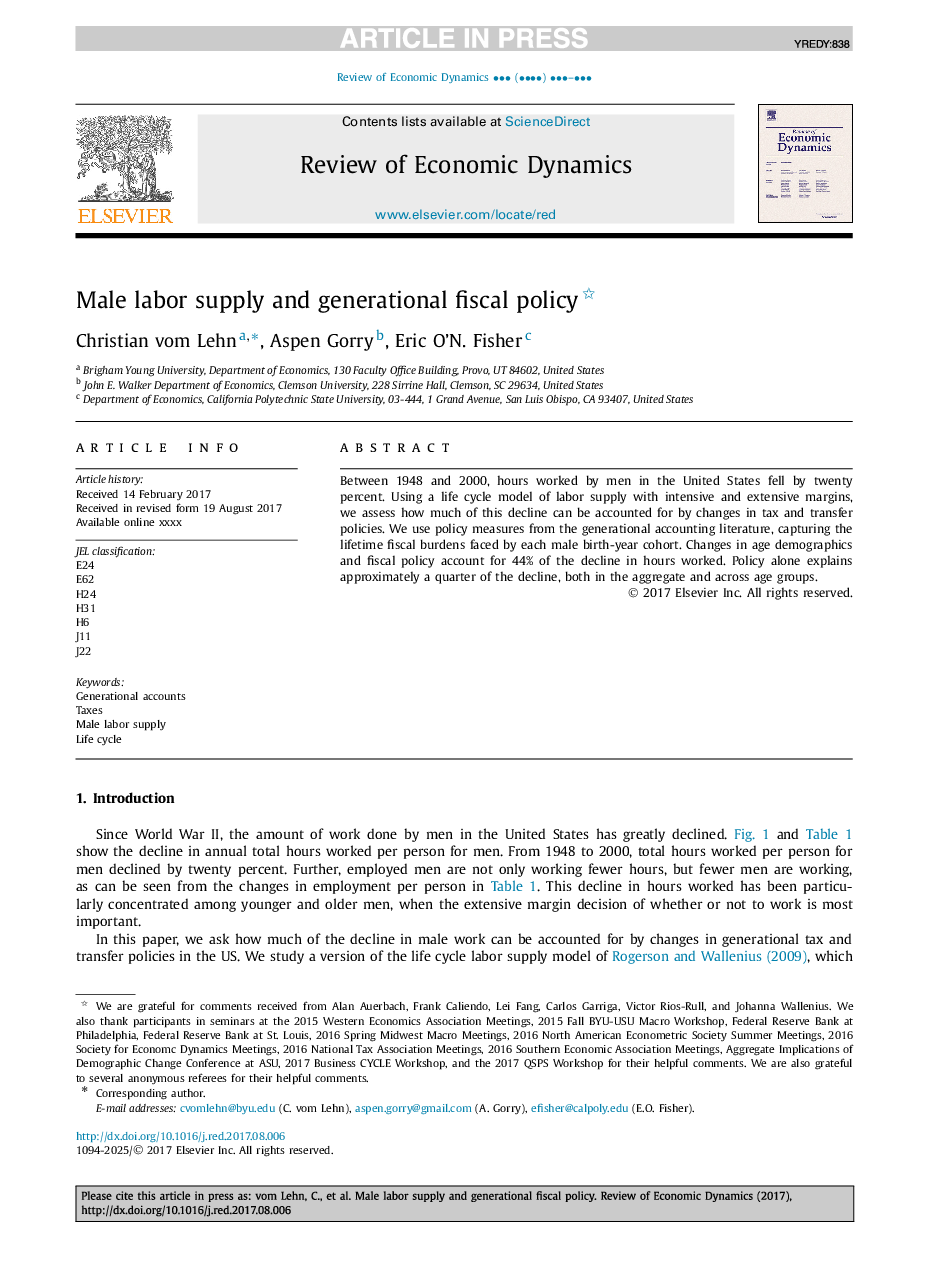| Article ID | Journal | Published Year | Pages | File Type |
|---|---|---|---|---|
| 7388168 | Review of Economic Dynamics | 2018 | 29 Pages |
Abstract
Between 1948 and 2000, hours worked by men in the United States fell by twenty percent. Using a life cycle model of labor supply with intensive and extensive margins, we assess how much of this decline can be accounted for by changes in tax and transfer policies. We use policy measures from the generational accounting literature, capturing the lifetime fiscal burdens faced by each male birth-year cohort. Changes in age demographics and fiscal policy account for 44% of the decline in hours worked. Policy alone explains approximately a quarter of the decline, both in the aggregate and across age groups.
Related Topics
Social Sciences and Humanities
Economics, Econometrics and Finance
Economics and Econometrics
Authors
Christian vom Lehn, Aspen Gorry, Eric O'N. Fisher,
